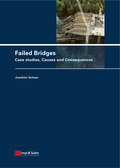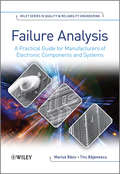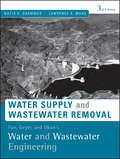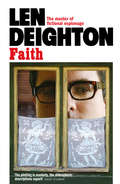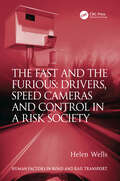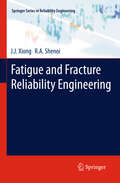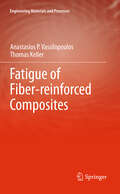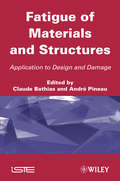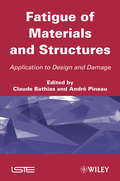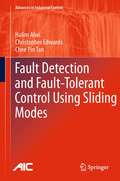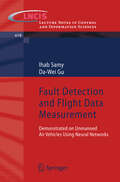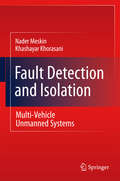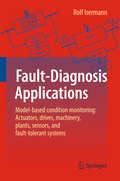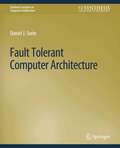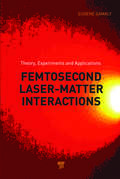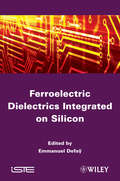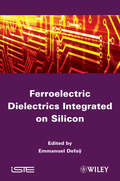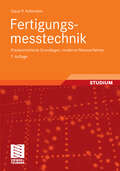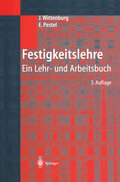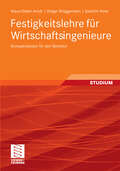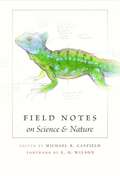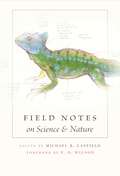- Table View
- List View
Failed Bridges: Case Studies, Causes and Consequences
by Joachim ScheerWhen bridges fail, often with loss of human life, those involved may be unwilling to speak openly about the cause. Yet it is possible to learn from mistakes. The lessons gained lead to greater safety and are a source of innovation. This book contains a systematic, unprecedented overview of more than 400 bridge failures assigned to the time of their occurrence in the bridges' life cycle and to the releasing events. Primary causes are identified. Many of the cases investigated are published here for the first time and previous interpretations are shown to be incomplete or incorrect. A catalogue of rules that can help to avoid future mistakes in design analysis, planning and erection is included. A lifetime's work brilliantly compiled and courageously presented - a wealth of knowledge and experience for every structural engineer.
Failure Analysis: A Practical Guide for Manufacturers of Electronic Components and Systems (Quality And Reliability Engineering Ser. #7)
by Marius Bazu Titu BajenescuFailure analysis is the preferred method to investigate product or process reliability and to ensure optimum performance of electrical components and systems. The physics-of-failure approach is the only internationally accepted solution for continuously improving the reliability of materials, devices and processes. The models have been developed from the physical and chemical phenomena that are responsible for degradation or failure of electronic components and materials and now replace popular distribution models for failure mechanisms such as Weibull or lognormal. Reliability engineers need practical orientation around the complex procedures involved in failure analysis. This guide acts as a tool for all advanced techniques, their benefits and vital aspects of their use in a reliability programme. Using twelve complex case studies, the authors explain why failure analysis should be used with electronic components, when implementation is appropriate and methods for its successful use. Inside you will find detailed coverage on: a synergistic approach to failure modes and mechanisms, along with reliability physics and the failure analysis of materials, emphasizing the vital importance of cooperation between a product development team involved the reasons why failure analysis is an important tool for improving yield and reliability by corrective actions the design stage, highlighting the ‘concurrent engineering' approach and DfR (Design for Reliability) failure analysis during fabrication, covering reliability monitoring, process monitors and package reliability reliability resting after fabrication, including reliability assessment at this stage and corrective actions a large variety of methods, such as electrical methods, thermal methods, optical methods, electron microscopy, mechanical methods, X-Ray methods, spectroscopic, acoustical, and laser methods new challenges in reliability testing, such as its use in microsystems and nanostructures This practical yet comprehensive reference is useful for manufacturers and engineers involved in the design, fabrication and testing of electronic components, devices, ICs and electronic systems, as well as for users of components in complex systems wanting to discover the roots of the reliability flaws for their products.
Failure Analysis: A Practical Guide for Manufacturers of Electronic Components and Systems (Quality and Reliability Engineering Series #5)
by Marius Bazu Titu BajenescuFailure analysis is the preferred method to investigate product or process reliability and to ensure optimum performance of electrical components and systems. The physics-of-failure approach is the only internationally accepted solution for continuously improving the reliability of materials, devices and processes. The models have been developed from the physical and chemical phenomena that are responsible for degradation or failure of electronic components and materials and now replace popular distribution models for failure mechanisms such as Weibull or lognormal. Reliability engineers need practical orientation around the complex procedures involved in failure analysis. This guide acts as a tool for all advanced techniques, their benefits and vital aspects of their use in a reliability programme. Using twelve complex case studies, the authors explain why failure analysis should be used with electronic components, when implementation is appropriate and methods for its successful use. Inside you will find detailed coverage on: a synergistic approach to failure modes and mechanisms, along with reliability physics and the failure analysis of materials, emphasizing the vital importance of cooperation between a product development team involved the reasons why failure analysis is an important tool for improving yield and reliability by corrective actions the design stage, highlighting the ‘concurrent engineering' approach and DfR (Design for Reliability) failure analysis during fabrication, covering reliability monitoring, process monitors and package reliability reliability resting after fabrication, including reliability assessment at this stage and corrective actions a large variety of methods, such as electrical methods, thermal methods, optical methods, electron microscopy, mechanical methods, X-Ray methods, spectroscopic, acoustical, and laser methods new challenges in reliability testing, such as its use in microsystems and nanostructures This practical yet comprehensive reference is useful for manufacturers and engineers involved in the design, fabrication and testing of electronic components, devices, ICs and electronic systems, as well as for users of components in complex systems wanting to discover the roots of the reliability flaws for their products.
Fair, Geyer, and Okun's, Water and Wastewater Engineering: Water Supply and Wastewater Removal
by Nazih K. Shammas Lawrence K. WangBased on the classic text by Fair, Greyer, and Okun, this new edition has been completely revised and updated including eight completely new chapters by university professors and engineers practicing in the field. It reflects current practice, includes access to an academic version of the commercial software Haestad Methods Water Solutions by Bentley, and now includes homework problems. This is a time of mounting urbanization and industrialization and resulting stress on water and wastewater systems. Clean and ample sources of water for municipal uses are becoming harder to find and more expensive to develop. Effective design and efficient operation of engineering works ask, above all, for a fuller understanding and application of scientific principles. The results of scientific research are being incorporated with remarkable success in new designs using both U.S. and SI systems equations, examples and problems as well as new operating procedures. This classic text, now updated, grounds readers in both the science and art of water and wastewater engineering that global engineers need to service their customers and communities.
Faith (Faith, Hope And Charity Trilogy #Vol. 1)
by Len DeightonBernard Samson returns to Berlin in the first novel in the classic spy trilogy, FAITH, HOPE and CHARITY
A Farmer’s Life for Me: How To Live Sustainably, Jimmiy's Way
by Jimmy DohertyIn this practical guide TV farmer Jimmy Doherty imparts his experience and ideas to show you how to achieve the self-sufficient lifestyle and add to your life whether growing for your own pleasure – or profit!
The Fast and The Furious: Drivers, Speed Cameras and Control in a Risk Society (Human Factors in Road and Rail Transport)
by Helen WellsThe Fast and The Furious: Drivers, Speed Cameras and Control in a Risk Society presents a sociological and criminological perspective critical to understanding the driver's role at the centre of road safety interventions. Such an approach is, it is argued, as crucial to an understanding of attempts to reduce road crashes, deaths and injuries as approaching such questions from an engineering or educational perspective. The book offers an explanation for the continued debate about one road safety intervention - the speed camera - by situating that debate within contemporary literature about the 'risk society' (Beck, 1992) and more broadly understood experiences of risk faced on a daily basis by drivers. Rather than a focus on risk as something that can be objectively assessed, measured and managed separately from the social context in which it is encountered, it suggests that 'risk' is something that permeates this particular debate from every angle. The book achieves its aims by utilising sociological and criminological perspectives to investigate issues such as: - the social context in which it is possible for drivers to reject official scientific expertise about crash causation and camera effectiveness - the self-defined 'respectability' of the population being problematised and its juxtaposition with a 'proper' police focus on 'real criminals' - the reconceptualisation of law-breaking as risk-taking rather than inherently 'wrong' behaviour and its consequences for the enforcement of laws based on risk assessment - the experience of being controlled by technology and of receiving what is essentially 'automated justice'. These and other issues are explored and suggested as illuminating of both the real concerns underpinning this debate and potentially instructive for future attempts to control risky behaviour both within and beyond a road safety context.
The Fast and The Furious: Drivers, Speed Cameras and Control in a Risk Society (Human Factors in Road and Rail Transport)
by Helen WellsThe Fast and The Furious: Drivers, Speed Cameras and Control in a Risk Society presents a sociological and criminological perspective critical to understanding the driver's role at the centre of road safety interventions. Such an approach is, it is argued, as crucial to an understanding of attempts to reduce road crashes, deaths and injuries as approaching such questions from an engineering or educational perspective. The book offers an explanation for the continued debate about one road safety intervention - the speed camera - by situating that debate within contemporary literature about the 'risk society' (Beck, 1992) and more broadly understood experiences of risk faced on a daily basis by drivers. Rather than a focus on risk as something that can be objectively assessed, measured and managed separately from the social context in which it is encountered, it suggests that 'risk' is something that permeates this particular debate from every angle. The book achieves its aims by utilising sociological and criminological perspectives to investigate issues such as: - the social context in which it is possible for drivers to reject official scientific expertise about crash causation and camera effectiveness - the self-defined 'respectability' of the population being problematised and its juxtaposition with a 'proper' police focus on 'real criminals' - the reconceptualisation of law-breaking as risk-taking rather than inherently 'wrong' behaviour and its consequences for the enforcement of laws based on risk assessment - the experience of being controlled by technology and of receiving what is essentially 'automated justice'. These and other issues are explored and suggested as illuminating of both the real concerns underpinning this debate and potentially instructive for future attempts to control risky behaviour both within and beyond a road safety context.
Fatigue and Fracture Reliability Engineering (Springer Series in Reliability Engineering)
by J.J. Xiong R.A. ShenoiFatigue and Fracture Reliability Engineering is an attempt to present an integrated and unified approach to reliability determination of fatigue and fracture behaviour, incorporating probability, statistics and other related areas.A series of original and practical approaches, are suggested in Fatigue and Fracture Reliability Engineering, including new techniques in determining fatigue and fracture performances. It also carries out an investigation into static and fatigue properties, and into the failure mechanisms of unnotched and notched CFR composite laminates with different lay-ups to optimize the stacking sequence effect. Further benefits include:a novel convergence-divergence counting procedure to extract all load cycles from a load history of divergence-convergence waves;practical scatter factor formulae to determine the safe fatigue crack initiation and propagation lives from the results of a single full-scale test of a complete structure; anda nonlinear differential kinetic model for describing the dynamical behaviour of an atom at a fatigue crack tip.Fatigue and Fracture Reliability Engineering is intended for practising engineers in marine, civil construction, aerospace, offshore, automotive and chemical industries. It is also useful reading for researchers on doctoral programmes, and is appropriate for advanced undergraduate and postgraduate programmes in any mechanically-oriented engineering discipline.
Fatigue of Fiber-reinforced Composites (Engineering Materials and Processes)
by Anastasios P. Vassilopoulos Thomas KellerFatigue has long been recognized as a mechanism that can provoke catastrophic material failure in structural applications and researchers are now turning to the development of prediction tools in order to reduce the cost of determining design criteria for any new material. Fatigue of Fiber-reinforced Composites explains these highly scientific subjects in a simple yet thorough way.Fatigue behavior of fiber-reinforced composite materials and structural components is described through the presentation of numerous experimental results. Many examples help the reader to visualize the failure modes of laminated composite materials and structural adhesively bonded joints. Theoretical models, based on these experimental data, are demonstrated and their capacity for fatigue life modeling and prediction is thoroughly assessed.Fatigue of Fiber-reinforced Composites gives the reader the opportunity to learn about methods for modeling the fatigue behavior of fiber-reinforced composites, about statistical analysis of experimental data, and about theories for life prediction under loading patterns that produce multiaxial fatigue stress states. The authors combine these theories to establish a complete design process that is able to predict fatigue life of fiber-reinforced composites under multiaxial, variable amplitude stress states. A classic design methodology is presented for demonstration and theoretical predictions are compared to experimental data from typical material systems used in the wind turbine rotor blade industry.Fatigue of Fiber-reinforced Composites also presents novel computational methods for modeling fatigue behavior of composite materials, such as artificial neural networks and genetic programming, as a promising alternative to the conventional methods. It is an ideal source of information for researchers and graduate students in mechanical engineering, civil engineering and materials science.
Fatigue of Materials and Structures: Application to Design and Damage (Iste Ser.)
by Claude Bathias André PineauThe design of mechanical structures with predictable and improved durability cannot be achieved without a thorough understanding of the mechanisms of fatigue damage and more specifically the relationships between the microstructure of materials and their fatigue properties. Written by leading researchers in the field, this book, along with the complementary books Fatigue of Materials and Structures: Fundamentals and Application to Damage and Design (both also edited by Claude Bathias and André Pineau), provides an authoritative, comprehensive and unified treatment of the mechanics and micromechanisms of fatigue in metals, polymers and composites. Each chapter is devoted to one of the major classes of materials or to different types of fatigue damage, thereby providing overall coverage of the field. This book deals with multiaxial fatigue, thermomechanical fatigue, fretting-fatigue, influence of defects on fatigue life, cumulative damage and damage tolerance, and will be an important and much used reference for students, practicing engineers and researchers studying fracture and fatigue in numerous areas of materials science and engineering, mechanical, nuclear and aerospace engineering.
Fatigue of Materials and Structures: Application to Design and Damage
by Claude Bathias André PineauThe design of mechanical structures with predictable and improved durability cannot be achieved without a thorough understanding of the mechanisms of fatigue damage and more specifically the relationships between the microstructure of materials and their fatigue properties. Written by leading researchers in the field, this book, along with the complementary books Fatigue of Materials and Structures: Fundamentals and Application to Damage and Design (both also edited by Claude Bathias and André Pineau), provides an authoritative, comprehensive and unified treatment of the mechanics and micromechanisms of fatigue in metals, polymers and composites. Each chapter is devoted to one of the major classes of materials or to different types of fatigue damage, thereby providing overall coverage of the field. This book deals with multiaxial fatigue, thermomechanical fatigue, fretting-fatigue, influence of defects on fatigue life, cumulative damage and damage tolerance, and will be an important and much used reference for students, practicing engineers and researchers studying fracture and fatigue in numerous areas of materials science and engineering, mechanical, nuclear and aerospace engineering.
Fault Detection and Fault-Tolerant Control Using Sliding Modes (Advances in Industrial Control)
by Halim Alwi Christopher Edwards Chee Pin TanFault Detection and Fault-tolerant Control Using Sliding Modes is the first text dedicated to showing the latest developments in the use of sliding-mode concepts for fault detection and isolation (FDI) and fault-tolerant control in dynamical engineering systems. It begins with an introduction to the basic concepts of sliding modes to provide a background to the field. This is followed by chapters that describe the use and design of sliding-mode observers for FDI using robust fault reconstruction. The development of a class of sliding-mode observers is described from first principles through to the latest schemes that circumvent minimum-phase and relative-degree conditions. Recent developments have shown that the field of fault tolerant control is a natural application of the well-known robustness properties of sliding-mode control. A family of sliding-mode control designs incorporating control allocation, which can deal with actuator failures directly by exploiting redundancy, is presented. Various realistic case studies, specifically highlighting aircraft systems and including results from the implementation of these designs on a motion flight simulator, are described. A reference and guide for researchers in fault detection and fault-tolerant control, this book will also be of interest to graduate students working with nonlinear systems and with sliding modes in particular. Advances in Industrial Control aims to report and encourage the transfer of technology in control engineering. The rapid development of control technology has an impact on all areas of the control discipline. The series offers an opportunity for researchers to present an extended exposition of new work in all aspects of industrial control.
Fault Detection and Flight Data Measurement: Demonstrated on Unmanned Air Vehicles using Neural Networks (Lecture Notes in Control and Information Sciences #419)
by Ihab Samy Da-Wei GuThis book considers two popular topics: fault detection and isolation (FDI) and flight data estimation using flush air data sensing (FADS) systems. Literature surveys, comparison tests, simulations and wind tunnel tests are performed. In both cases, a UAV platform is considered for demonstration purposes. In the first part of the book, FDI is considered for sensor faults where a neural network approach is implemented. FDI is applied both in academia and industry resulting in many publications over the past 50 years or so. However few publications consider neural networks in comparison to traditional techniques such as observer based, parameter estimations and parity space approaches. The second part of this book focuses on how to estimate flight data (angle of attack, airspeed) using a matrix of pressure sensors and a neural network model. In conclusion this book can serve as an introduction to FDI and FADS systems, a literature survey, and a case study for UAV applications.
Fault Detection and Isolation: Multi-Vehicle Unmanned Systems
by Nader Meskin Khashayar Khorasani“Fault Detection and Isolation: Multi-Vehicle Unmanned System” deals with the design and development of fault detection and isolation algorithms for unmanned vehicles such as spacecraft, aerial drones and other related vehicles. Addressing fault detection and isolation is a key step towards designing autonomous, fault-tolerant cooperative control of networks of unmanned systems. This book proposes a solution based on a geometric approach, and presents new theoretical findings for fault detection and isolation in Markovian jump systems. Also discussed are the effects of large environmental disturbances, as well as communication channels, on unmanned systems. The book proposes novel solutions to difficulties like robustness issues, as well as communication channel anomalies. “Fault Detection and Isolation: Multi-Vehicle Unmanned System” is an ideal book for researchers and engineers working in the fields of fault detection, as well as networks of unmanned vehicles.
Fault-Diagnosis Applications: Model-Based Condition Monitoring: Actuators, Drives, Machinery, Plants, Sensors, and Fault-tolerant Systems
by Rolf IsermannSupervision, condition-monitoring, fault detection, fault diagnosis and fault management play an increasing role for technical processes and vehicles in order to improve reliability, availability, maintenance and lifetime. For safety-related processes fault-tolerant systems with redundancy are required in order to reach comprehensive system integrity. This book is a sequel of the book “Fault-Diagnosis Systems” published in 2006, where the basic methods were described. After a short introduction into fault-detection and fault-diagnosis methods the book shows how these methods can be applied for a selection of 20 real technical components and processes as examples, such as: Electrical drives (DC, AC)Electrical actuatorsFluidic actuators (hydraulic, pneumatic)Centrifugal and reciprocating pumpsPipelines (leak detection)Industrial robotsMachine tools (main and feed drive, drilling, milling, grinding)Heat exchangers Also realized fault-tolerant systems for electrical drives, actuators and sensors are presented. The book describes why and how the various signal-model-based and process-model-based methods were applied and which experimental results could be achieved. In several cases a combination of different methods was most successful. The book is dedicated to graduate students of electrical, mechanical, chemical engineering and computer science and for engineers.
Fault Tolerant Computer Architecture (Synthesis Lectures on Computer Architecture)
by Daniel SorinFor many years, most computer architects have pursued one primary goal: performance. Architects have translated the ever-increasing abundance of ever-faster transistors provided by Moore's law into remarkable increases in performance. Recently, however, the bounty provided by Moore's law has been accompanied by several challenges that have arisen as devices have become smaller, including a decrease in dependability due to physical faults. In this book, we focus on the dependability challenge and the fault tolerance solutions that architects are developing to overcome it. The two main purposes of this book are to explore the key ideas in fault-tolerant computer architecture and to present the current state-of-the-art - over approximately the past 10 years - in academia and industry. Table of Contents: Introduction / Error Detection / Error Recovery / Diagnosis / Self-Repair / The Future
Femtosecond Laser-Matter Interaction: Theory, Experiments and Applications
by Eugene G. GamalyThis is the first comprehensive treatment of the interaction of femtosecond laser pulses with solids at nonrelativistic intensity. It connects phenomena from the subtle atomic motion on the nanoscale to the generation of extreme pressure and temperature in the interaction zone confined inside a solid. The femtosecond laser-matter interaction has al
Ferroelectric Dielectrics Integrated on Silicon
by Emmanuel DefaÿThis book describes up-to-date technology applied to high-K materials for More Than Moore applications, i.e. microsystems applied to microelectronics core technologies. After detailing the basic thermodynamic theory applied to high-K dielectrics thin films including extrinsic effects, this book emphasizes the specificity of thin films. Deposition and patterning technologies are then presented. A whole chapter is dedicated to the major role played in the field by X-Ray Diffraction characterization, and other characterization techniques are also described such as Radio frequency characterization. An in-depth study of the influence of leakage currents is performed together with reliability discussion. Three applicative chapters cover integrated capacitors, variables capacitors and ferroelectric memories. The final chapter deals with a reasonably new research field, multiferroic thin films.
Ferroelectric Dielectrics Integrated on Silicon
by Emmanuel DefaÿThis book describes up-to-date technology applied to high-K materials for More Than Moore applications, i.e. microsystems applied to microelectronics core technologies. After detailing the basic thermodynamic theory applied to high-K dielectrics thin films including extrinsic effects, this book emphasizes the specificity of thin films. Deposition and patterning technologies are then presented. A whole chapter is dedicated to the major role played in the field by X-Ray Diffraction characterization, and other characterization techniques are also described such as Radio frequency characterization. An in-depth study of the influence of leakage currents is performed together with reliability discussion. Three applicative chapters cover integrated capacitors, variables capacitors and ferroelectric memories. The final chapter deals with a reasonably new research field, multiferroic thin films.
Fertigungsmesstechnik: Praxisorientierte Grundlagen, moderne Messverfahren
by Claus P. KefersteinDieses Lehrbuch führt in Entwicklung, Bedeutung und Zusammenhänge der Mess- und Prüfverfahren für industriell hergestellte Produkte ein. Die Schwerpunkte liegen auf den Verfahren für Messraum und Betrieb, auf den fertigungs- und prozessorientierten Verfahren sowie auf den berührungslosen, optischen Verfahren. Vermittelt werden die Grundlagen der Messtechnik, wie sie in Industrie und Technik Anwendung finden und bei der ingenieurwissenschaftlichen Ausbildung wie auch in der Praxis immer wieder benötigt werden. In der aktuellen Auflage wurde ein Kapitel zur Mikromesstechnik sowie ein deutsch-englisches und englisch-deutsches Sachwortverzeichnis aufgenommen.
Festigkeitslehre: Ein Lehr- und Arbeitsbuch (Klassiker der Technik)
by Jens WittenburgDas Lehr- und Arbeitsbuch erscheint als Nachfolgeband des Lehrbuchs Technische Mechanik Band 2, Festigkeitslehre, von Pestel und Wittenburg. Dafür wurden zwei Teile zu einem Band zusammengefügt: Der erste Teil ist die gründlich überarbeitete Neuauflage des Lehrbuchs und stellt auf anschauliche und mathematisch einfache Weise die Grundzüge der Festigkeitslehre dar. Der zweite Teil liefert ausführlich erklärte Lösungen zu allen 200 Aufgaben des Lehrbuchs und schult Leser darin, technische Fragestellungen in mathematische Gleichungen umzusetzen.
Festigkeitslehre für Wirtschaftsingenieure: Kompaktwissen für den Bachelor
by Klaus-Dieter Arndt Holger Brüggemann Joachim IhmePädagogisch-didaktisch aufbereitetes Werk, das in Kurzform die Theorie der Festigkeitslehre darstellt. Das Werk enthält Beispiele mit Wirtschaftlichkeitsbetrachtungen und Übungsaufgaben zur Verfestigung des Stoffes. Abgestimmt auf eine 4h-Vorlesung für Bachelor, aber auch für Techniker sowie Praktiker im Beruf geeignet.
Field Notes on Science & Nature
by Michael R. CanfieldWhat did George Schaller note when studying the lions of the Serengeti? How does Piotr Naskrecki use relational databases and electronic field notes? In what way is Bernd Heinrich’s approach “truly Thoreauvian,” in E. O. Wilson’s view? Pioneering a new niche in the study of plants and animals in their native habitat, Field Notes on Science and Nature allows readers to peer over the shoulders and into the notebooks of a dozen eminent field workers, to study firsthand their methods, materials, and fleeting impressions. Recording field observations is an indispensable scientific skill, but researchers are not generally willing to share their personal records. Here, for the first time, are reproductions of actual pages from notebooks. And in essays abounding with fascinating anecdotes, the authors reflect on the contexts in which the notes were taken. Covering disciplines as diverse as ecology, paleontology, anthropology, botany, and animal behavior, Field Notes offers specific examples that professional naturalists can emulate to fine-tune their own field methods, along with practical advice that amateur naturalists and students can use to document their adventures.
Field Notes on Science & Nature
by Michael R. CanfieldWhat did George Schaller note when studying the lions of the Serengeti? How does Piotr Naskrecki use relational databases and electronic field notes? In what way is Bernd Heinrich’s approach “truly Thoreauvian,” in E. O. Wilson’s view? Pioneering a new niche in the study of plants and animals in their native habitat, Field Notes on Science and Nature allows readers to peer over the shoulders and into the notebooks of a dozen eminent field workers, to study firsthand their methods, materials, and fleeting impressions. Recording field observations is an indispensable scientific skill, but researchers are not generally willing to share their personal records. Here, for the first time, are reproductions of actual pages from notebooks. And in essays abounding with fascinating anecdotes, the authors reflect on the contexts in which the notes were taken. Covering disciplines as diverse as ecology, paleontology, anthropology, botany, and animal behavior, Field Notes offers specific examples that professional naturalists can emulate to fine-tune their own field methods, along with practical advice that amateur naturalists and students can use to document their adventures.
